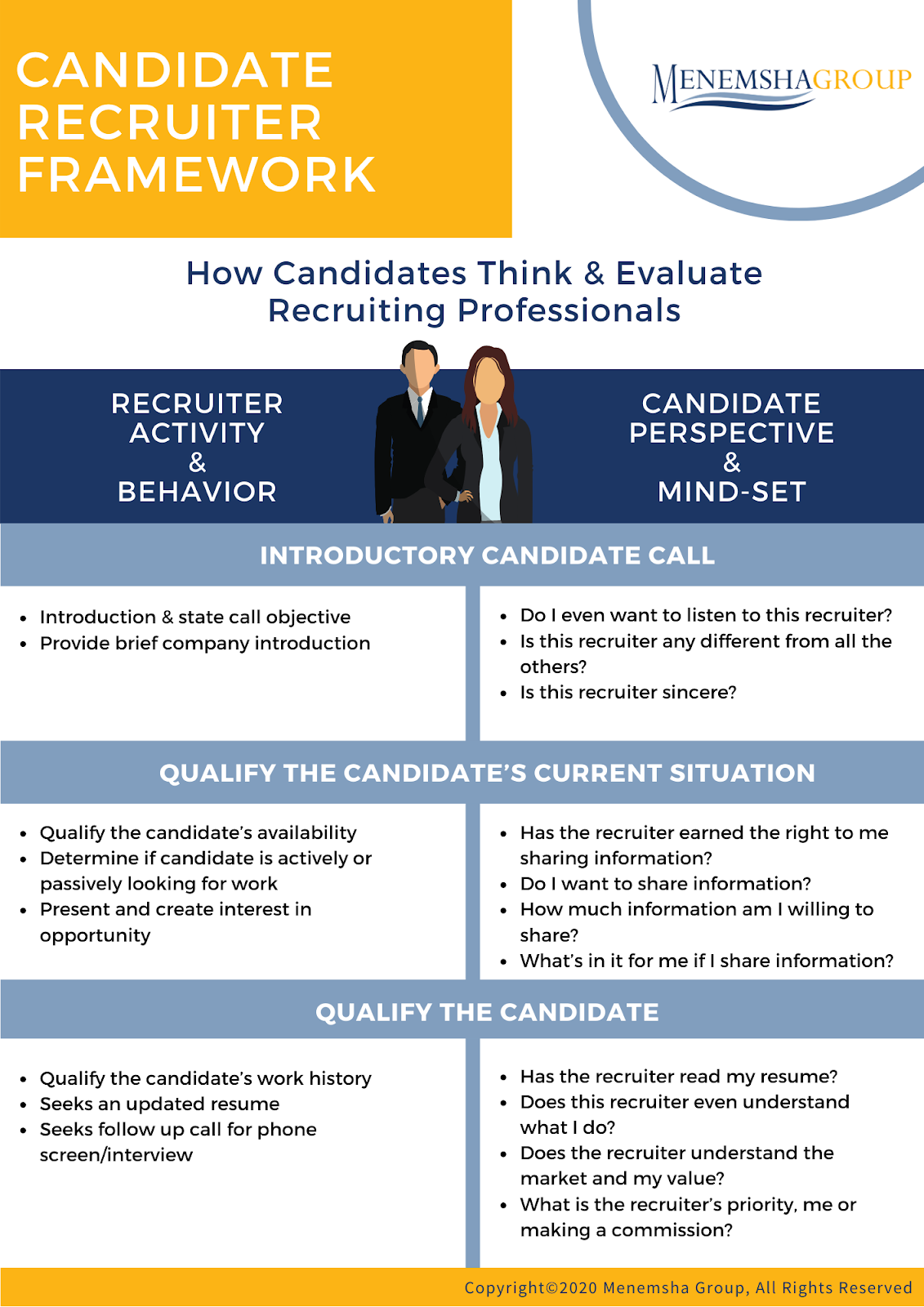1 min read
Most Staffing Firms are Not Built to Scale, But to Survive
Most staffing firms don’t struggle to scale because their teams aren’t working hard. They struggle because they don’t have a real go-to-market...
4 min read
![]() Dan Fisher
:
Sep 2, 2020 4:45:00 AM
Dan Fisher
:
Sep 2, 2020 4:45:00 AM

For many recruiting professionals, the goal and expectation of the introductory candidate call is to secure a candidate submittal. For many other recruiting professionals, the goal and expectation of the introductory candidate call is to either conduct the candidate interview or schedule the candidate interview with the end client. Pretty lofty goals eh.
I believe the best and most desirable outcome that can come from an introductory candidate call is to complete the candidate interview and submit the candidate to an open client job requisition. Unfortunately, the probability of achieving this is low. Why? For any recruiter to schedule the candidate interview, and complete the candidate interview, AND make a candidate submittal, off a COLD (introductory) call, a few few things need to happen first.
You will first need to disarm your candidate. Disarming your candidate should be your first and primary goal of the introductory candidate call. Disarming your candidate means to relieve your candidate of anxiety, pressure or hostility, and to put them at ease and make them feel comfortable speaking with you. If you can't make your candidate feel comfortable engaging in an open and transparent conversation, then they will NEVER feel comfortable answering your sensitive questions such as those related to their job search, career goals, salary expectations, availability or where things stand with their current employer or job search. When it comes to executing the introductory candidate call, focus on disarming your candidate.
Your second goal, AFTER YOU HAVE SUCCESSFULLY DISARMED YOUR CANDIDATE, is to begin the initial candidate screening process. Only after you have disarmed the candidate will the candidate feel comfortable in answering your screening questions. By asking the right screening questions you can quickly determine if the candidate is active or passive and whether the candidate should be pipelined for future opportunities or considered for a current opportunity.
Do You Understand How Candidates Think, Evaluate Recruiters?
When candidates receive your unplanned, unsolicited phone call, several questions and concerns are running through their minds. In the candidate-recruiter alignment framework illustration below you will notice the left-hand column represents the things recruiters say and do when engaging a candidate for the first time. The right-hand column represents things that trigger concerns in the mind of the candidate.

While you're talking, your candidate is thinking: "Do I even want to listen to this recruiter?" "Do they sound sincere?" "Do they sound different?" "Do they even understand my role and what I do?" "Is this recruiter competent?" "Do I want to share information with this recruiter?"
After looking at this illustration I think we would all agree that understanding the candidate's perspective is vital. Candidates have many options to consider and decisions to make when trying to select a recruiter and make a career decision. So why don't more recruiters take the time to better understand the candidate's perspective? Because they're mostly focused on what they're going to say and pitching their job opportunity.
The Skill of Disarming Candidates
It is important to remember, your introductory call is just another unplanned interruption in your candidate's day. When a candidate hears an unfamiliar voice on the phone they unconsciously go into defensive mode and put their guard up. To get candidates to take their guard down and feel comfortable speaking with you, you can apply these two disarming tactics:
One of the reasons I encourage a counter-intuitive approach is because your competition is doing the opposite. Most recruiters are calling and introducing themselves, and immediately pitching "I have the perfect opportunity." Their traditional, self-serving, transactional approach creates resistance and enhances the barrier between the recruiter and the candidate. Applying this counter-intuitive approach will differentiate you because this approach is the opposite of what your competition is doing, and it's the opposite of what your candidates have been conditioned to experience from recruiters.
Why Having a Disarming Mindset is Key to Success
Until you've been thoroughly trained, have created a recruiter call plan and have internalized a well designed script including your candidate interview and screening questions, and have developed the skill of disarming, 80% or more of your introductory candidate calls will end with this outcome. In some cases, you will have asked some but not all of your screening questions and in other cases, you may never even get into asking your screening questions. These calls end prematurely for one of the following reasons:
Hopefully you can see how and why the skill of disarming the candidate is key to executing the introductory candidate call and the gateway to securing the next step in the recruiting process, scheduling and executing the candidate interview.

1 min read
Most staffing firms don’t struggle to scale because their teams aren’t working hard. They struggle because they don’t have a real go-to-market...

In my previous post, How to Prevent Unexpected Contract Terminations, I shared how systemizing consultant and client check-ins at key milestones...

About a year ago, I was serving as the fractional revenue leader, managing sales and recruiting for a client.